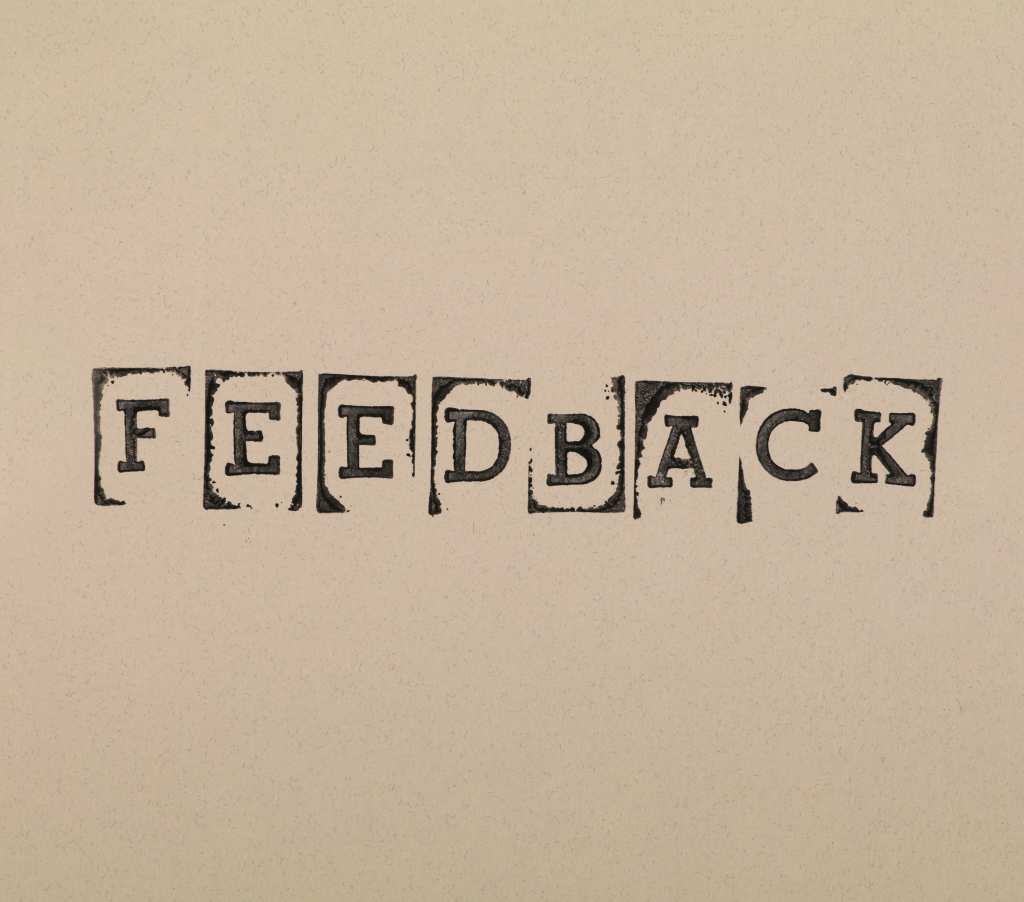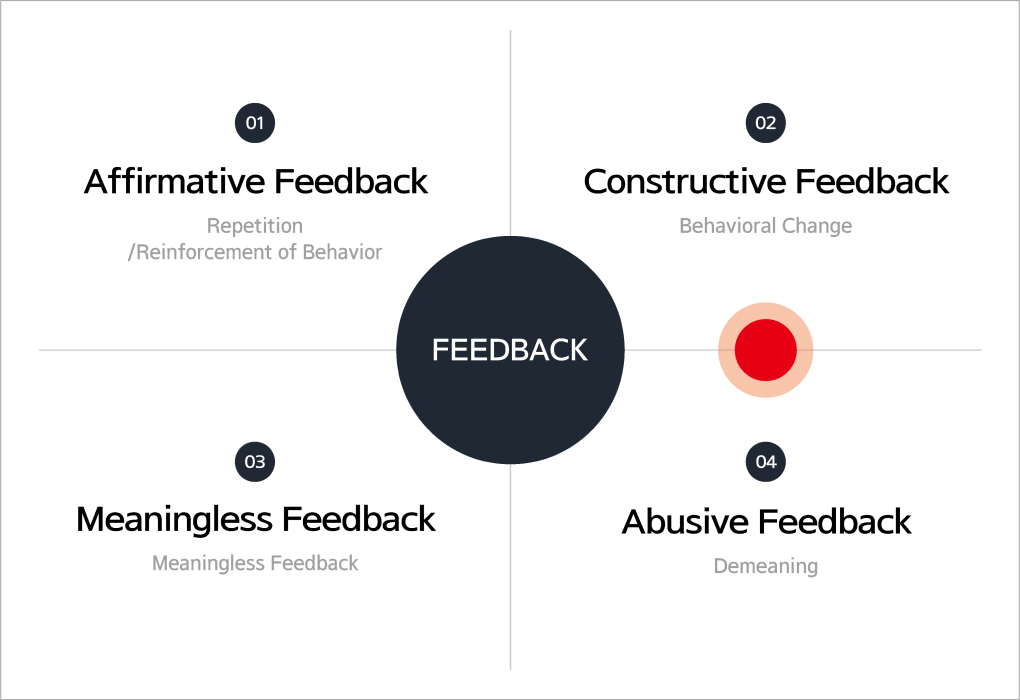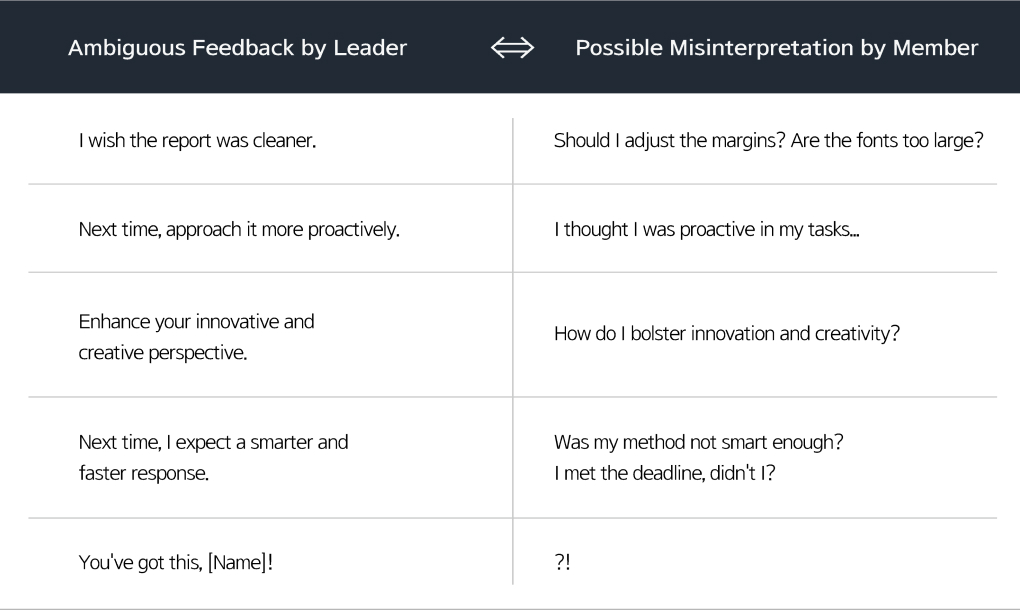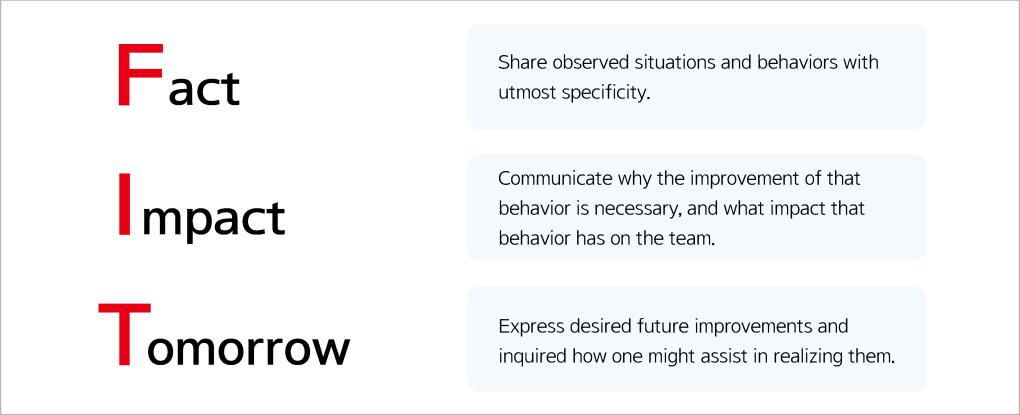

-
-
- 메일 공유
-
https://stories.amorepacific.com/en/the-wow-what-how-of-a-coaching-leader-what-must-be-done
The Wow (What & How) of a Coaching Leader: What Must Be Done?

On Coaching and Feedback
Part 3. The Wow (What & How) of a Coaching Leader: What Must Be Done?
Columnist
Ha kyungtae Amorepacific Leadership Development Team

In our third column, we shall delve deeper into the practical methodologies, the ‘What,’ of business coaching. As a gentle reminder, just as I shared in my second column, I am writing this series under the definition of business coaching as “coaching that occurs between a leader and the team members.”
First, let's examine how the ICF (International Coach Federation) and the KCA (Korea Coaching Association) define coaching:

[Table 1. ICF & KCA Coaching Definitions]
There are commonalities in the definitions provided by ICF and KCA. While not explicitly stated in the original, coaching, at its core, is a process that ‘through questioning’ stimulates a client's thoughts, motivation, and potential, empowering them to harness their capabilities.
The principle is to enable the client to find solutions themselves, rather than providing answers directly. While I concur with this approach in the grander scheme and long-term perspective, I believe there's a need for more flexibility in our organizational setting.
In an organization striving to achieve committed results within a defined timeline, “organizational coaching requires a delicate balance with teaching,” depending on the situation and the individual. Thus, this column will pivot around striking the right balance between coaching and teaching.
1. Four Types of Coaching/Feedback
When we hear the word ‘feedback,’ we instinctively think of coaching/feedback about areas requiring improvement or refinement. This makes receiving feedback not always a pleasant or joyful experience. However, coaching/feedback isn't limited to just the corrective type. Let's outline and discuss the four main types of coaching/feedback:

[Table 2] Source: Richard Williams, Tell Me How I'm Doing
① Affirmative Feedback: Even commendable actions demand coaching/feedback. A prevalent misconception in organizations is that laudable efforts are quickly glossed over with mere praises, reserving feedback primarily for situations requiring improvement. . The objectives of affirmative feedback are:
1) To lucidly inform the members of their commendable actions,
2) To encourage the repetition of such actions, and
3) To underscore the desire to reinforce those behaviors.
Consequently, members who receive this feedback strive to repeat the behavior. This also serves as a yardstick, signaling to other members the desired actions envisaged by the leader.
② Constructive Feedback: The crux of constructive feedback is that it is rooted in “Fact” and devoid of personal bias, precisely pinpointing behaviors that require change.Result-oriented feedback sometimes struggles to induce the intended behavioral changes, potentially transitioning into evaluative feedback rather than insightful advice. To achieve a productive coaching/feedback session, the fundamental reasons behind specific outcomes - the process and behavior - must be highlighted.
③ Abusive Feedback: In this modern era, one would presume that leaders employing abusive feedback are nearly extinct (and indeed, they should be😊). However, it's crucial to recognize that abusive feedback doesn't necessarily originate with the intent of belittling. Instead, it can inadvertently emerge during constructive feedback sessions when emotions and personal opinions overshadow objective assessment. This overlapping boundary between constructive and abusive feedback is marked in red in < Table 2 >. To avoid slipping into abusive feedback, one should heed the significance of observations/records, as mentioned in the second column, and bear in mind the principles of F.I.T. in coaching/feedback, which will be expounded upon later.
④ Meaningless Feedback: : Some leaders often lament, “No matter how much I convey to the members, their behavior remains unchanged.” While it might sometimes be an issue with the member, it's also worth introspecting whether the feedback provided was, in essence, vacuous. Vague feedback, inherently nebulous and general, fails to convey its intent and purpose, leaving recipients clueless and unable to amend their actions.
For instance:

To wrap up, I've detailed the four feedback types. You may have already discerned, but I urge you to remember that the kinds of feedback essential for members are affirmative and constructive.
2. Principles of F.I.T for Coaching/Feedback
I'd like to delve deeper into the F.I.T. principle, which is highly recommended for utilization during coaching and feedback sessions. This principle revolves around three pivotal points: Fact, Impact, and Tomorrow.

[Table 3: Source: AP Coaching-Leader Program_ Feedback Principle F.I.T]
① Fact: When offering coaching or feedback, sharing observed situations and behaviors with the highest level of detail is imperative. I can't stress this enough: coaching or feedback devoid of observation and documentation can quickly degenerate into a futile discussion rooted in subjective or relative interpretations.
② Impact: It is essential to articulate why improving a particular behavior is necessary, and what impact that behavior has on the team. Occasionally, the feedback recipient might respond with, “I think I'm doing fine,” or “I don't see a problem with my behavior.” Yet, from a leadership perspective, if a behavior impacts other team members, it's essential to provide feedback emphasizing the need for improvement.
③ Tomorrow: This focuses on expressing how one would like to see improvements in the future or ending with a question on how best to assist. Many of you might effectively cover the ‘Fact’ and ‘Impact’ but often neglect discussing future goals or the support needed. The essence of discussing “Tomorrow” is collaboratively deciding on the necessary improvements and ascertaining the required assistance.
Leaving out even one element of the F.I.T principle during coaching/feedback can significantly diminish its effectiveness:
✓ Coaching or feedback without Fact can lead to a time-consuming process based on ambiguous interpretations.
✓ Without emphasizing the Impact, the necessity for improvement may be undermined.
✓ Coaching or feedback lacking Tomorrow may seem like an abrupt end after listing facts and faults, resulting in unproductive discussions.
In summing up today's column, leaders must provide their team members with affirmative and constructive coaching/feedback. During these coaching/feedback sessions, I strongly recommend engaging in dialogue based on the F.I.T. principle.
In this column, I've discussed the ‘What’ of coaching/feedback. In the upcoming fourth column, we will explore ‘How’ leaders can tailor their coaching/feedback for individual team members and how we utilize the continuous feedback feature in our AP&I.
-
Like
0 -
Recommend
0 -
Thumbs up
0 -
Supporting
0 -
Want follow-up article
0


